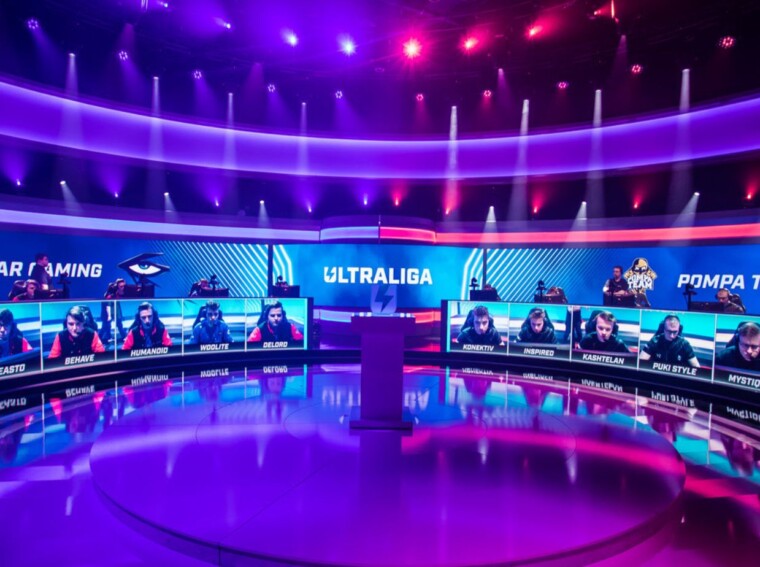Esports has long occupied a peculiar niche outside the scope of traditional athletic sports like football or basketball. While they may not demand the type of physical exertion that a slam dunk or a touchdown run does, the need for hand-eye coordination, talent, and practice means that esports check all the boxes that traditional sports do.
We’ve seen the industry gain newfound legitimacy in recent years, whether through increased attention because of platforms like Twitch, a new generation of technology-oriented fans who idolize streamers like Ninja in the same way that previous generations looked up to Babe Ruth or Tom Brady, or because of the sports gambling industry’s expansion to taking wagers on video game competitions through PayPal betting sites.
As the esports industry continues to evolve, we’ve seen it come into its own. Rather than focusing on the difference between esports and traditional sports, companies and viewing platforms have embraced them, using these unique qualities to build their own successful brand. One such example is broadcasting: with the ability to see what each competitor sees on their screen, getting the bird’s eye view as a match unfolds creates a certain level of intrigue that other sports simply do not possess. Here’s a look at what makes esports broadcasts great and the latest developments to hit the industry.
Looking at Live Commentary
Mic’d up segments are some of the most popular in modern sports broadcasts, the ability to hear what an athlete is saying as they play the sports they excel at. It gives insight into how they process the game and what makes them great, as well as offers a snippet of what their personalities are like, a crucial element of fan-athlete relationships in today’s increasingly interconnected world.
Almost all forms of competition are built on communication, whether it’s individual matches or team sports, and video games are no different, with communication via headset one of the calling cards of online play. This naturally paves the way for fans to hear players talk amidst their competitions, an added level of immersion outside of the typical detached commentary you hear in other sports.

In team competitions like Overwatch, you get to hear players communicate with their teammates, strategizing and giving insight into how they perform the way they do.
While free-for-all or one-on-one formats don’t have the same requirement for teamwork, that actually makes the live commentary even more interesting. Streamers like Ninja are famous for their trash talk, ripping their competitors to shreds with their words along with their performance on the digital playing surface.
The online format is an excellent breeding ground for viral moments, and snarky comments make the viewing experience all the more engaging: who doesn’t love a well-placed jibe in the midst of fierce competition?
Virtual Reality
It’s one of the biggest buzzwords in technology today, and for good reason. Virtual reality headsets are making their way into the sporting industry, whether in traditional sports leagues like the NBA or the video game leagues, we all know and love. Getting to see the game from a player’s eyes offers an opportunity like never before.
You’ll experience the adrenaline rush as a professional Call of Duty player tries to outsmart a camping sniper in real time, feel the panic as your screen starts to fill with red damage indicators, and the shock as a competitor jumps out from behind you.
By feeling like you’re physically in the game, the stakes are higher than ever, making for an experience that is simultaneously nerve-wracking and exhilarating.
Always on the Move
Perhaps the best thing about being an esports fan—and thus, about watching esports broadcasts—is the fact that the video game industry is always growing and changing. Take a look at some of the leading brands in the world of esports today. Fortnite didn’t exist seven years ago. Overwatch didn’t exist eight years ago; now it has a sequel, keeping things even fresher. League of Legends didn’t exist 15 years ago.

With traditional sports and their broadcasts, things largely stay the same. You might get new superstars who draw in a new generation of fans, or you might see a rule change here and there, leading to a slow evolution in the way a game is played.
New video games are coming out every year, exploding in popularity and changing the way we play. Unlike football, where there’s only one major professional league (with all due respect to amateur levels of competition like high school and college football), hundreds of companies make video games, whether it’s a major studio like Activision or an independent creator.
This level of innovation impacts the broadcasting industry, too, because commentators have to learn the way a new esport is played. Rather than having years to learn the game of basketball and immersing themselves in it, broadcasters have to learn on the fly as a new game or franchise installment comes out.
That also makes the competitor-sourced commentary on platforms like Twitch all the better: you can hear from the best of the best as they operate.


